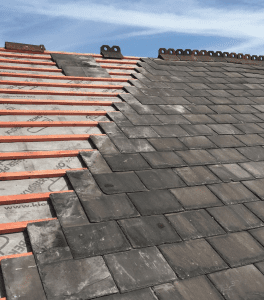The United Kingdom is renowned for its diverse and historically rich architectural landscape, but behind every stunning structure lies a strict set of regulations that ensure each building is safe, functional, and sustainable. These building regulations form the backbone of construction practices across the country, dictating essential standards to safeguard safety, accessibility, and energy efficiency. This comprehensive guide by 3D Construction, specialists in bespoke kitchen extensions and home renovations, explores the ins and outs of building regulations in the UK. It covers everything from the application process and responsibilities to specific project considerations, such as house extensions.
What are Building Regulations?
Building regulations in the UK are a robust set of legally enforceable standards that govern the construction, alteration, and renovation of buildings. These rules are put in place to ensure that every building, whether newly constructed or modified, adheres to strict guidelines aimed at protecting the health, safety, and welfare of its occupants. Additionally, building regulations promote energy efficiency and environmental sustainability, ensuring that buildings contribute positively to the reduction of carbon emissions.
These regulations are comprehensive, addressing critical aspects of construction such as structural integrity, fire safety, ventilation, thermal insulation, drainage, and accessibility. For instance, structural integrity regulations ensure that buildings can withstand potential loads like wind, snow, and the weight of the structure itself. Fire safety rules require the use of fire-resistant materials and well-planned escape routes, minimising the risk of injury in the event of a fire. Similarly, building regulations emphasise energy efficiency, mandating the installation of thermal insulation and the use of energy-saving materials to reduce a building’s carbon footprint.
Moreover, these regulations are not just about new buildings; they also apply to renovations, conversions, and extensions. From ensuring proper insulation in a loft conversion to incorporating fire safety measures in a new kitchen extension, every aspect of a project must comply with the relevant building standards. Compliance is mandatory for all construction projects, making building regulations a cornerstone of the UK’s construction industry.
Do You Need Building Regulations Approval?
If you are planning any significant construction, extension, or renovation work, the chances are high that you will need building regulations approval. This approval ensures that the project meets the required standards in areas such as safety, energy efficiency, and environmental impact. For new builds and major projects like extensions, this process is crucial and is often handled by the contractor or developer overseeing the work.
In some cases, minor works or repairs may be exempt from these regulations, but it’s always advisable to check with a professional or your local authority to confirm whether or not approval is required. 3D Construction offers expert advice and can assist with obtaining necessary approvals, ensuring a smooth and compliant project from start to finish.
Understanding Building Regulation Applications
Navigating the building regulation application process can be complex, especially for first-time homeowners or small developers. There are different types of applications, each catering to various project scenarios and requirements:
- Building Notice Application: This is often the quickest and simplest route for smaller projects. A building notice informs the local authority that you intend to begin work. While convenient, this method may not be suitable for complex projects, as it doesn’t require detailed plans to be submitted beforehand.
- Full Plans Submission: For larger or more intricate projects, a full plans submission is advisable. In this approach, detailed drawings and specifications are submitted to the local authority for approval. This ensures that the project will meet all the necessary building regulations before any construction work begins.
- Regularisation Application: This is for work that has already been carried out without prior approval. In this case, you can apply for regularisation, allowing the local authority to inspect the completed work and ensure it meets building standards. If it does, they will issue a regularisation certificate, making the work officially compliant.
Each type of application has its advantages and is suited to different types of projects. Consulting with professionals like 3D Construction will help you determine the most suitable approach for your building project, ensuring compliance at every stage.
Planning Permission vs. Building Regulations
One common point of confusion for property owners is the difference between planning permission and building regulations. While both are integral to construction projects, they serve different purposes:
- Building Regulations focus on the technical aspects of construction, such as ensuring the safety, health, and energy efficiency of the building. Approval in this context relates to whether the project complies with building standards.
- Planning Permission is concerned with how the development will affect the local environment, neighbouring properties, and the overall aesthetic of the area. It governs the size, appearance, and positioning of buildings.
In many cases, you will need both planning permission and building regulations approval, particularly for larger projects like extensions or new builds. However, smaller projects may fall under permitted development rights, which allow certain changes without planning permission.
Who is Responsible for Building Regulations Approval?
The responsibility for obtaining building regulations approval lies primarily with the property owner or developer. However, this task is often handled by professionals involved in the project, such as architects, contractors, or developers. In a collaborative approach, all parties, including engineers and surveyors, must ensure that their contributions to the project comply with the relevant regulations.
At 3D Construction, we provide a comprehensive service, managing every aspect of your project to ensure full compliance with building regulations. Our team will liaise with local authorities, submit the necessary documentation, and ensure that all work meets the required standards.
Building Regulations for Extensions
House extensions offer an excellent opportunity to expand living space, but they also come with their own set of building regulation requirements. Extensions must adhere to rules regarding structural integrity, fire safety, thermal insulation, and ventilation, among other things.
For instance, the extension must be built to withstand expected loads, such as wind and its own weight. Fire safety measures must be incorporated into the design, including the use of fire-resistant materials and clearly defined escape routes. Furthermore, the extension must be energy-efficient, with proper insulation and ventilation systems to maintain air quality and minimise heat loss.
The team at 3D Construction can guide you through the regulations specific to your extension project, ensuring compliance with all building standards while delivering a high-quality, functional living space.
Do You Need an Architect for an Extension?
Although hiring an architect is not a legal requirement for most extension projects, many homeowners choose to do so for their expertise in design and planning. However, opting for a design and build company like 3D Construction can often be more cost-effective and efficient.
Architect fees can vary significantly, often depending on the size and complexity of the project. For extensions, architects typically charge between 5% and 12% of the total project cost, or they may bill on an hourly basis, ranging from £50 to £90 per hour. Alternatively, a design and build company can streamline the process, offering a single point of contact from concept to completion and potentially reducing costs by handling both design and construction in-house.
How to Apply for Building Regulations Approval
Applying for building regulations approval involves submitting detailed plans and specifications to your local authority, along with completing the necessary application forms and paying any associated fees. Depending on the complexity of your project, the local authority may request further information before granting approval.
At 3D Construction, we simplify this process for our clients by managing the entire application process. From drawing up the plans to ensuring compliance with building regulations, we take the stress out of your project, leaving you to enjoy the end result.
Planning Rules and Building Regulations for Kitchen Extensions
Kitchen extensions are among the most popular home improvement projects, but they also come with specific planning and building regulation requirements. While some smaller kitchen extensions may fall under permitted development rights, larger projects will likely require both planning permission and building regulations approval.
3D Construction offers a complete service for kitchen extensions, from planning and design through to securing the necessary approvals and constructing the extension to the highest standards. We ensure that every kitchen extension we undertake is fully compliant with building regulations, resulting in a functional, energy-efficient, and safe space for our clients.
In conclusion, building regulations are a crucial aspect of any construction project, ensuring that buildings are safe, sustainable, and built to last. Whether you’re planning a major renovation or a simple extension, understanding and complying with building regulations is essential to the success of your project. At 3D Construction, we provide expert guidance and comprehensive services to help you navigate the complexities of building regulations, from initial planning to final approval. Contact us today for more information on how we can help bring your project to life.



